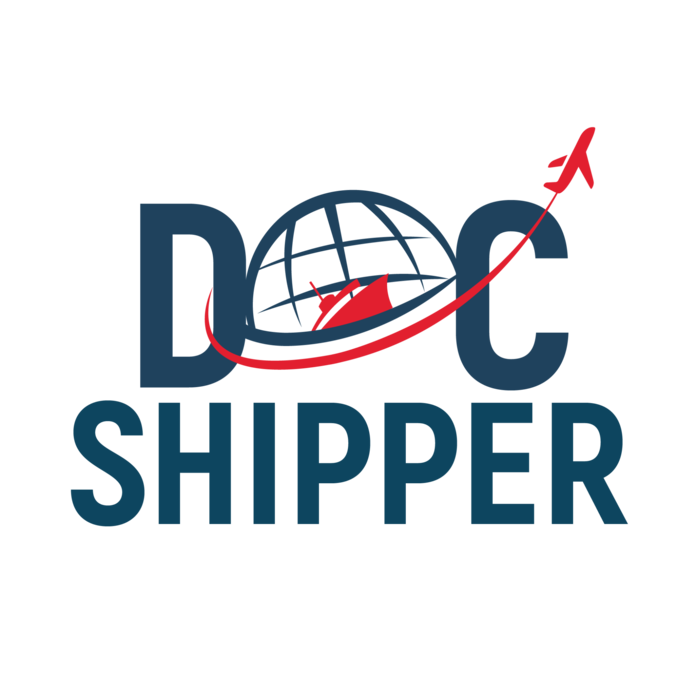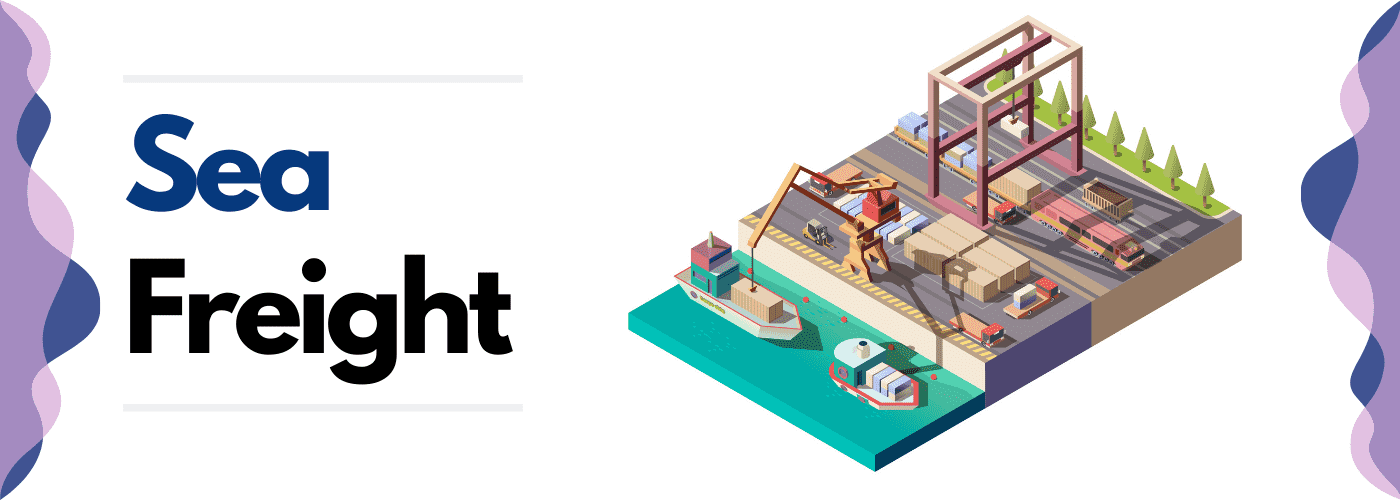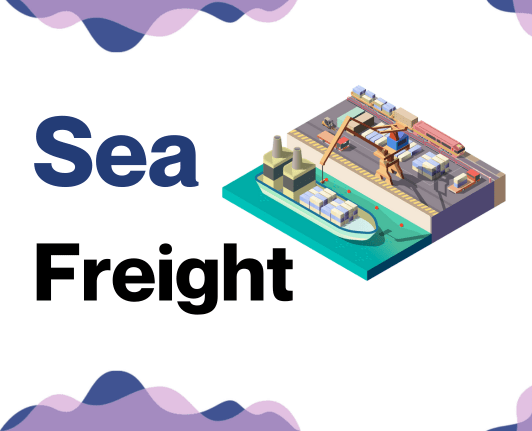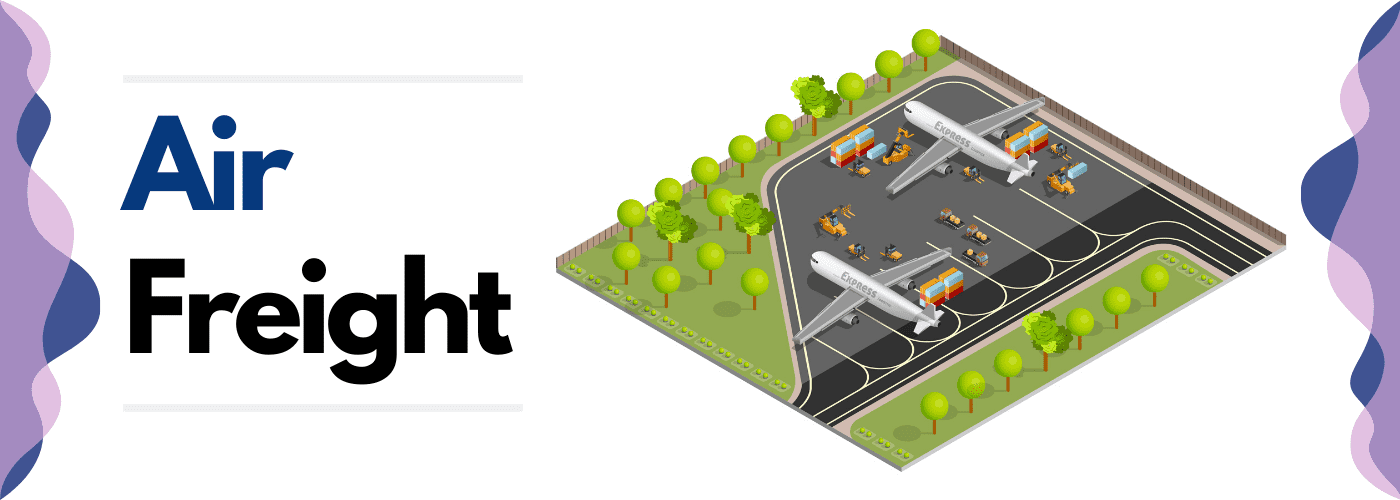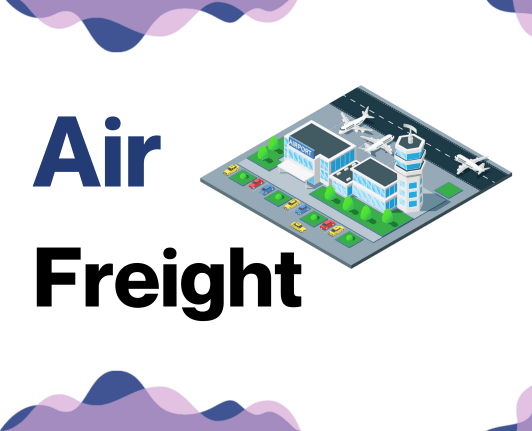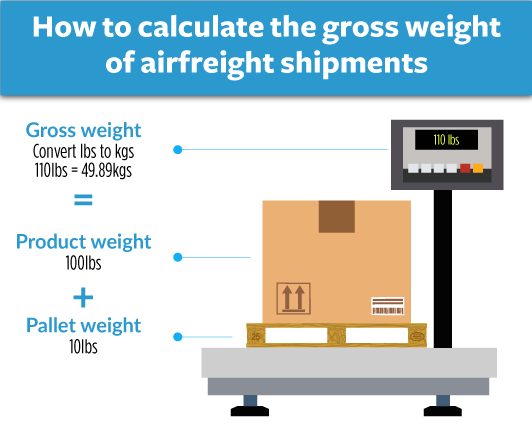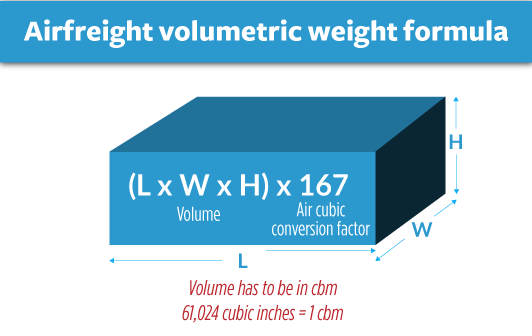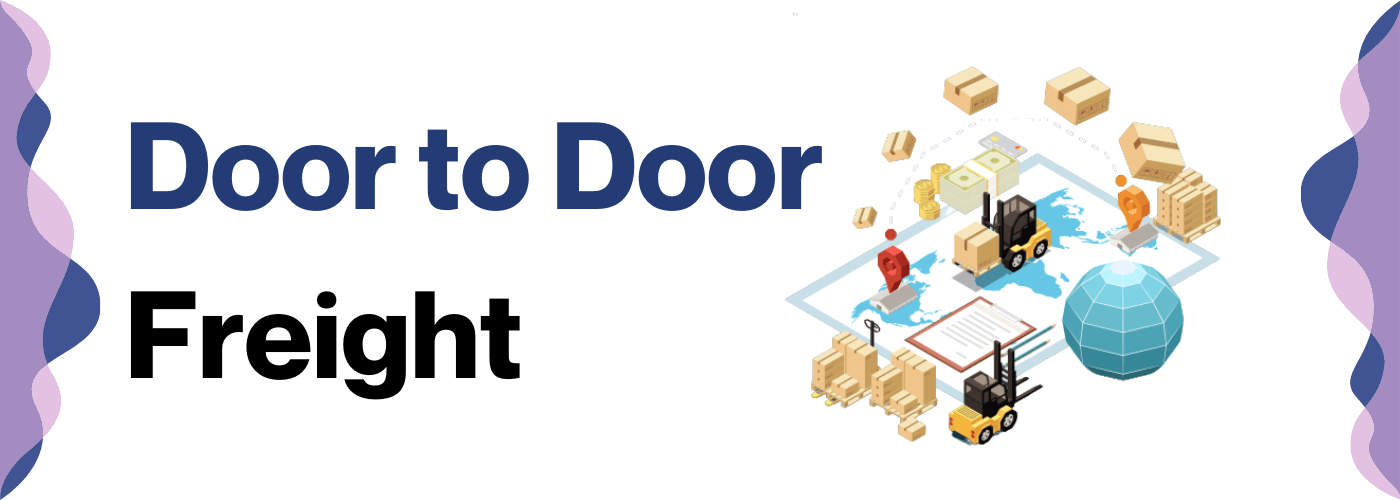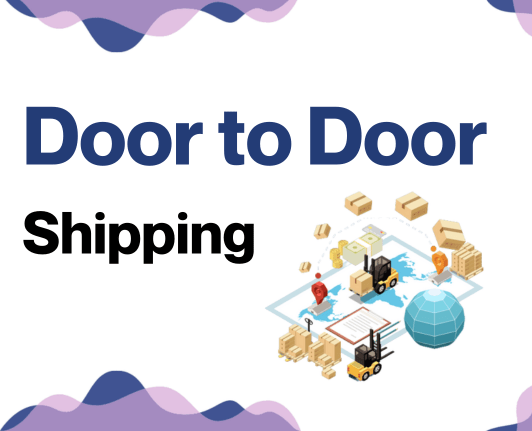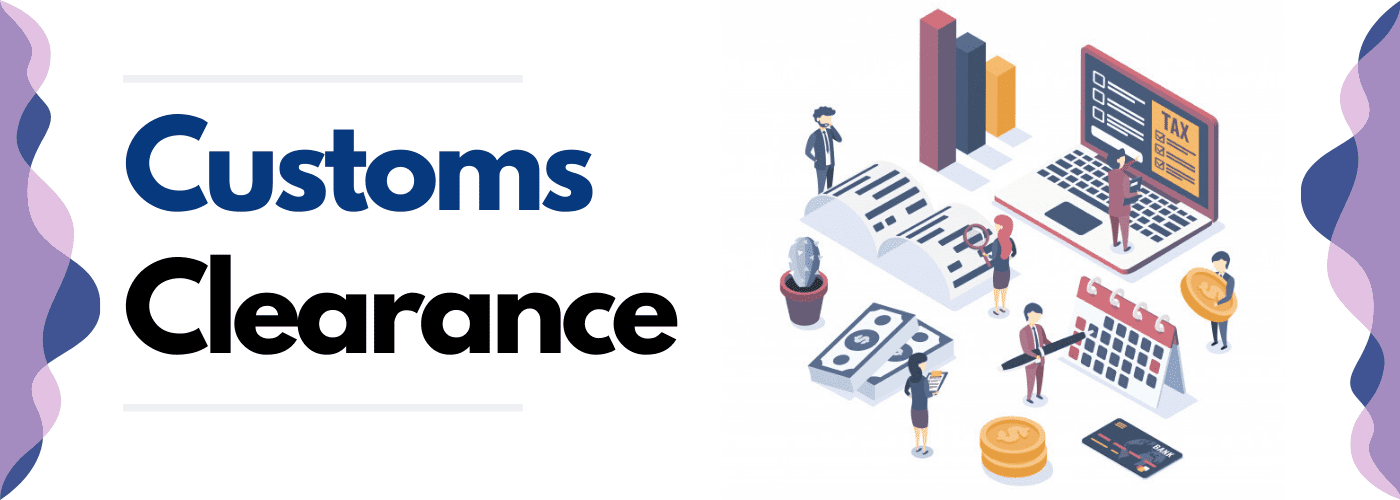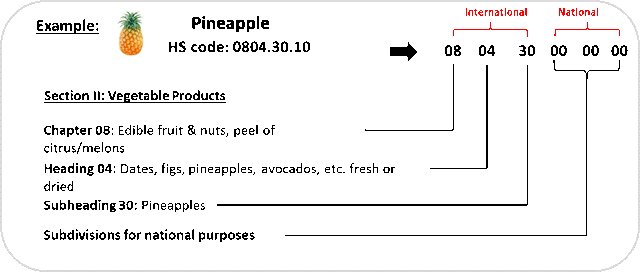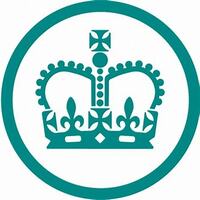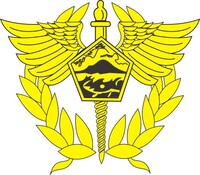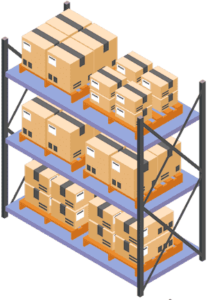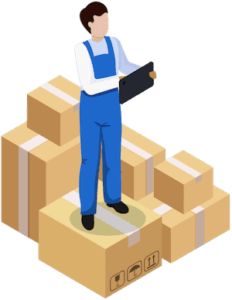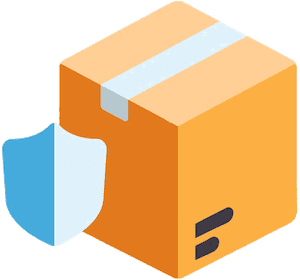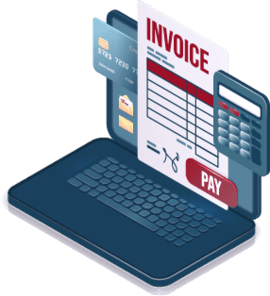Pancakes and parliaments may have something in common: they aren't as straightforward as they look – much like shipping freight from the UK to Indonesia. From discerning complicated rate structures and transit times, to navigating a labyrinth of customs regulations, doing business across borders brings its own set of puzzles. This guide is designed to unravel these knots, diving deep into different freight options available, intricacies of the customs clearance process, duties, taxes, and delivering focused advice to facilitate your business's global voyage. If the process still feels overwhelming, let DocShipper handle it for you! As an experienced international freight forwarder, we're adept in managing all essential stages of your shipping operations, morphing challenges into gains for businesses like yours.
Table of Contents
Which are the different modes of transportation between UK and Indonesia?
Shipping between the UK and Indonesia can feel like a challenging puzzle, but think of it like a game of chess. Each piece, or shipping method in our case, has its unique set of moves catered to the game's context - the distance, borders, and even the urgency of your shipment. Air freight scores a checkmate for time-critical deliveries, while ocean freight wins for bulky, non-urgent shipments. If it's a marathon not a sprint, sea is your knight in shining armor, but if time is of the essence, air is your swift queen. Choose wisely, your business game depends on it!
How can DocShipper help?
Shipping goods from the UK to Indonesia is no small task. At DocShipper, we streamline the journey, coordinating all transport, customs, and administrative hurdles for you. Got a question? Our team of consultants is ready to chat. Seeking a quote? Request one today, and we'll provide a detailed estimate in less than 24 hours. Let us be your hassle-free freight forwarding solution.
DocShipper Tip: Ocean freight might be the best solution for you if:
- You're dealing with large quantities or oversized items. Sea freight offers a budget-friendly way to maximize space, a particularly useful option given the UK's extensive port network.
- Your shipment isn't on a tight schedule. Ocean transport typically takes longer than air or rail, but it offers reliability.
- Your supply chain involves key ports, allowing you to take advantage of a wide-reaching network of sea lanes.
Sea freight between UK and Indonesia
The UK and Indonesia share a dynamic trade relationship, sending mountains of cargo across the waters from key locations like the bustling port of Southampton to Jakarta’s renowned Tanjung Priok. Ocean shipping is a vital link in the chain, though a slow and steady one. With the right approach, large quantities of goods find their way economically between these nations via the vast, rolling sea. But smooth sailing isn't guaranteed. Businesses often hit snags, making avoidable errors as they traverse the maritime shipping world’s intricate labyrinth. Like fitting different pieces of a puzzle together correctly, there are specifications to follow. Missteps can cost time and money, turning a cost-effective solution into a burdensome expense. This section unveils the best practices for successful ocean shipping, designed to sail past sea freight complexities effortlessly. From customs paperwork to choosing the right container type, we take you on a profound journey, turning sea waves into smooth highways for your goods. Stay tuned to avoid those costly mistakes and steer your business safely across the treacherous shipping waters.
Main shipping ports in UK
Port of Felixstowe
Location and Volume: The port is located in Felixstowe, Suffolk, and is the busiest port in the UK handling over 40% of Britain's containerized trade, with an annual shipping volume of approximately 4 million TEUs.
Key Trading Partners and Strategic Importance: Main trading partners are Europe and East Asia. With two deep-water container terminals, it is a natural choice for large container vessels coming from Asia.
Context for Businesses: If your business aims at reaching consumers in the award-winning 'Logistics Hub UK', Felixstowe's strategic location in the southeast of England will help you reach your goal while its efficient rail and road connections offer fast onward distribution to the rest of the UK.
Port of Southampton
Location and Volume: Situated in Southampton, Hampshire, it is the UK's number one vehicle handling port and Europe's leading turnaround cruise port with a shipping volume of 1.9 million TEUs.
Key Trading Partners and Strategic Importance: Trading partners are spread globally with the Far East making up a substantial proportion. The port is renowned for its fast vessel turnaround time and connectivity to major UK roadways and railways.
Context for Businesses: If your business involves the frequent shipping of automobiles or targeting the European market, the Port of Southampton, with its superior infrastructure and quick turnaround, can provide a competitive advantage.
Port of Liverpool
Location and Volume: Close to the Irish Sea in Liverpool, this port boasts a shipping volume of about 700,000 TEUs annually.
Key Trading Partners and Strategic Importance: Key trading partners include North America, the Middle East, and Indian subcontinent. It has the advantage of being both a coastal and a river port and is often preferred for bulk cargo.
Context for Businesses: If your business deals in bulk goods, or you seek access to the wide-ranging markets of the North of England, Scotland, and Ireland, the Port of Liverpool's ideal geographical location and extensive network of feeder services would be beneficial.
Port of London
Location and Volume: The Port of London is based on the River Thames and has a shipping volume of around 50 million tons of cargo per annum.
Key Trading Partners and Strategic Importance: Europe, South America, and Africa make up a significant portion of its trading partners. It serves around 80 terminals and caters to a wide range of cargoes, thanks to its extensive handling capabilities.
Context for Businesses: If your business has diverse shipping needs or seeks penetration into the affluent London market, the Port of London's versatile facilities and central location might be an integral part of your logistics strategy.
Grimsby & Immingham Port
Location and Volume: Located on the Humber Estuary in North East Lincolnshire, this port handles approximately 59 million tonnes of cargo annually.
Key Trading Partners and Strategic Importance: Major trading partners are in Northern Europe and Scandinavia. It is the UK's largest port by tonnage, predominantly serving the energy sector with coal, oil, and biofuels.
Context for Businesses: If you operate in the energy sector or aim to reach markets in Northern Europe, Grimsby & Immingham, with its large cargo handling capacity and specialty in energy cargo, could be fundamental to your logistic operations.
Port of Tyne
Location and Volume: Located in Tyne, near Newcastle in the North East of England, it handles around 600,000 TEUs per year.
Key Trading Partners and Strategic Importance: It has a varied mix of trading partners around the globe and is a significant player for the transport of cars, containers, and bulk commodities.
Context for Businesses: If your business is involved in the automotive sector, or requires a strong connection to North East England and Scotland, the Port of Tyne's excellent transportation links and specialized cargo handling may be essential for your logistics.
Main shipping ports in Indonesia
Port of Jakarta
Location and Volume: Located in the capital city of Indonesia, Jakarta, the Port of Jakarta also known as Tanjung Priok is the largest and busiest port in the country, with a shipping volume of approximately 6.58 million TEU annually.
Key Trading Partners and Strategic Importance: The key trading partners include China, Singapore, Malaysia, Australia, and Japan. Its strategic location along the North Jakarta coastal area and well-established trade networks makes it a major hub in Indonesia's shipping industry.
Context for Businesses: If you're looking to expand your business in Southeast Asia, especially Indonesia, the Port of Jakarta might be an essential part of your logistics, given its vast connections, high volume handling capacity and proximity to Indonesia's biggest consumer market.
Port of Surabaya
Location and Volume: Situated on the northeastern coast of Java, the Port of Surabaya is the second largest port in Indonesia. It boasts an approximate annual shipping volume of 3.8 million TEU.
Key Trading Partners and Strategic Importance: Its key trading partners are predominantly East and Southeast Asian countries such as China, Singapore, and the Philippines. This port serves as a crucial connection point for businesses targeting both the domestic Indonesian and wider Asian markets.
Context for Businesses: As the Port of Surabaya is near numerous manufacturing industries, it may be an excellent selection for businesses looking to transport raw materials or finished goods to or from Indonesia.
Port of Belawan
Location and Volume: The Port of Belawan is positioned in the north of Sumatra and handles around 1.2 million TEU annually.
Key Trading Partners and Strategic Importance: Trading primarily with Malaysia, Thailand, and many Indian and European countries, this port is invaluable to businesses targeting these regions.
Context for Businesses: If you're dealing in commodities like palm oil, rubber, or tobacco, the Port of Belawan, located in one of Indonesia's primary agricultural regions, may prove beneficial for your logistics.
Port of Makassar
Location and Volume: Resting on the southwestern coast of Sulawesi, the Port of Makassar deals with a shipping volume of around 1 million TEU annually.
Key Trading Partners and Strategic Importance: With key trading partners including Australia, Japan, and China, this port provides diverse international connections for businesses.
Context for Businesses: Should your shipping needs cater to Eastern Indonesia or Northern Australia, the Port of Makassar serves as an ideal logistics hub due to its strategic location.
Port of Semarang
Location and Volume: Found on the north coast of Java, the Port of Semarang conducts operations equivalent to around 933,000 TEU yearly.
Key Trading Partners and Strategic Importance: Primarily trading with Singapore, China, and Hong Kong, this port is of great significance for businesses specifically targeting these markets.
Context for Businesses: If you're in the furniture or retail sector, the central location of the Port of Semarang, surrounded by many manufacturing and industrial firms, could aid in optimizing your supply chain.
Port of Panjanghttp://ksopbandarlampung.dephub.go.id/
Location and Volume: Nearby the Sunda Strait, the Port of Panjang facilitates the movement of approximately 840,000 TEU annually.
Key Trading Partners and Strategic Importance: Frequent trade occurs with Australia, India, and various Southeast Asian countries. The port's strategic position provides optimal access to both the Indian and Pacific Oceans.
Context for Businesses: If your shipping needs include a blend of Pacific and Indian Ocean routes, or if you're dealing in commodities like coal and rubber, the Port of Panjang could be a vital component of your shipping and logistics strategy.
Should I choose FCL or LCL when shipping between UK and Indonesia?
Deciding between shipping consolidation (LCL) or a full container load (FCL) when transporting goods from the UK to Indonesia is instrumental in shaping your logistics journey. This choice homes in on cost-efficiency, delivery timelines, and ultimately, your shipping ventures' success. To unravel this, we delve into the ins and outs of these two primary sea freight options. We ink the road map, guiding you to make an astute decision that responds to your unique shipping demands. Dive in, one decision can make waves!
LCL: Less than Container Load
Definition: LCL, or Less than Container Load, is a shipping option where your cargo shares space with cargo from other shippers within a single container.
When to Use: This shipping method is ideal for businesses with a cargo volume of less than 13 to 15 CBM. Its pricing model offers more flexibility for low volume loads.
Example: Consider a company shipping 10 CBM of electronics from the UK to Indonesia every two months. Instead of committing to a full container they might not fill, selecting the LCL option enables them to only pay for the space they use, satisfying their irregular shipping needs.
Cost Implications: LCL freight can be cost-effective for small shipments, as you're only paying for the space that your cargo occupies in the container. However, costs may increase with consolidation and deconsolidation fees, so it's crucial to get an accurate LCL shipping quote that reflects all costs involved. Moreover, the frequency of LCL shipments should also be considered as sending multiple LCL shipments could ultimately exceed the cost of a Full Container Load (FCL).
FCL: Full Container Load
Definition: FCL, or Full Container Load, is a term in international freight. In FCL shipping, you rent an entire container, either a 20'ft or a 40'ft container, for your cargo only.
When to Use: FCL shipping is ideal when the cargo is more than 13/14/15 cubic metres (CBM). It not only turns out to be cheaper for high volume shipments but also offers added security as the FCL container is sealed from origin to destination.
Example: For instance, a UK-based furniture retailer looking to import a large stock of teak furniture from Indonesia. Given the volume, they would opt for FCL shipping. By doing this, they ensure the furnishings aren't loaded and unloaded multiple times, minimizing potential damage.
Cost implications: While an initial FCL shipping quote might seem higher than Less Container Load (LCL) options, it often ends up being more cost-effective for large volumes. Furthermore, when thinking long term, the security provided by the full container reduces the risk of damage-associated costs. So, businesses must consider these aspects to make informed decisions about which freight option is best for them.
Unlock hassle-free shipping
Looking to sail your goods smoothly from the UK to Indonesia? DocShipper is here to strip away the complexities of cargo shipping. Our ocean freight specialists will guide you through the decision-making process, taking into account your cargo type, volume, budget, and timeline. With us, choosing between consolidation and a full container is no longer daunting. Tempted? Request a free estimation today and let's simplify ocean freight together!
How long does sea freight take between UK and Indonesia?
On average, sea freight from the UK to Indonesia can take between 22 to 35 days. It's essential to consider that transit times can be influenced by factors such as specific ports used, the weight of the shipment, and the nature of the goods. For a more accurate estimate catered to your specific requirements, it's highly recommended to engage a freight forwarder - like DocShipper.
Now, to give you a general idea of the average transit times, here is a rough table for the four main freight ports from both countries:
| UK Ports | Indonesia Ports | Average Transit Times (Days) |
| Port of Felixstowe | Port of Tanjung Priok | 30 |
| Port of Southampton | Port of Tanjung Emas | 28 |
| Port of London | Port of Belawan | 35 |
| Port of Bristol | Port of Tanjung Perak | 32 |
Please note that these are just averages - contact us to get a customised, most accurate quote.
How much does it cost to ship a container between UK and Indonesia?
Pinpointing a precise figure for ocean freight rates between the UK and Indonesia is challenging due to various determining factors. These include your Points of Loading and Destination, your choice of carrier, the nature of your goods, and prevailing monthly market fluctuations. Shipping costs can range from multiple hundreds to a few thousand per CBM. Yet, there's no need for uncertainty: our shipping specialists offer tailored quotes. By focusing on your specific needs, we ensure you receive the best rates for your shipping requirements. Rest assured, we make every effort to keep your international trade moving smoothly and cost-effectively.
Special transportation services
Out of Gauge (OOG) Container
Definition: OOG containers are special types of containers designed to transport out of gauge cargo that don't fit in standard containers due to their irregular size or shape.
Suitable for: Oversized equipment, heavy machinery, large manufactured goods, and other items that exceed standard container dimensions.
Examples: Industrial equipment, sailing boats, large statues, and construction materials.
Why it might be the best choice for you: If your business deals with oversized items that cannot be broken down into smaller parts, OOG containers can accommodate these unique requirements and ensure safe transportation from the UK to Indonesia.
Break Bulk
Definition: Break bulk refers to cargo that's transported in bags, boxes, crates, drums, or barrels. These are individually loaded and not in shipping containers.
Suitable for: Non-containerized goods, individual pieces or units, and large machinery disassembled into parts.
Examples: Bags of cocoa or coffee, barrels of oil, or construction equipment divided into multiple parts.
Why it might be the best choice for you: Break bulk is an optimal solution if your cargo is loose and can be packaged separately for loading and unloading.
Dry Bulk
Definition: Dry bulk involves the transportation of loose cargo loads like grains, coal, or minerals that are poured directly into the ship's hold.
Suitable for: Commodities that can be loaded and carried in large quantities, such as raw materials.
Examples: Grains, ores, coal, cement, or fertilizers.
Why it might be the best choice for you: If your business involves shipping large quantities of unpackaged goods, choosing dry bulk could offer a cost-effective and efficient solution.
Roll-on/Roll-off (Ro-Ro)
Definition: Ro-Ro refers to transport where wheeled cargo is driven on and off the Ro-Ro vessel.
Suitable for: Vehicles, trailers, tractors, railway wagons, and other heavy rolling stock.
Examples: Trailers loaded with goods, cars, trucks, or buses.
Why it might be the best choice for you: If your cargo includes mobile machinery or vehicles, Ro-Ro is an ideal choice as it simplifies the process of loading and unloading.
Reefer Containers
Definition: Reefer containers are refrigerated shipping containers for perishable goods. These temperature-controlled containers maintain the necessary coolness or heat for the cargo.
Suitable for: Fruits, vegetables, dairy products, pharmaceuticals, or any goods sensitive to temperature.
Examples: Medicines, ice cream, seafood, or fresh flowers.
Why it might be the best choice for you: If your business involves temperature-sensitive products, reefer containers provide the necessary environment for safe transport.
Whether you are dealing with OOG, break bulk, dry bulk, Ro-Ro, or need reefer containers, DocShipper is here to assist with all shipping challenges. Contact DocShipper now for a fast, free shipping quote in less than 24 hours, tailored specifically for your business needs.
DocShipper Tip: Air freight might be the best solution for you if:
- You're facing tight deadlines or need rapid delivery. Air freight is your quickest option, which aligns well with the fast-paced business environment.
- Your shipment is relatively small, under 2 CBM. Air freight is ideal for these more compact loads.
- Your cargo's destination isn't easily reached via sea or rail. This makes air freight a viable option, especially given the extensive network of airports available.
Air freight between UK and Indonesia
As swift as a peregrine falcon and reliable as your morning alarm clock – that's air freight for you, especially when your valuable goods need to jet from the UK to Indonesia. Think high-end electronics or urgent pharmaceutical supplies; air freight shines when time is money. Yet, like a mystery novel, things aren't always as they seem. Many of you playing this global logistics game stumble when pricing your goods for air travel. Some of you might be using the wrong weight formula, making your shipping expenses climb higher than an airplane. Others might overlook smart practices, pushing your costs to stratospheric levels, similar to paying for a first-class ticket when there's affordable economy. Get ready as we demystify these air freight blind spots in the next section.
Air Cargo vs Express Air Freight: How should I ship?
Struggling with your UK to Indonesia shipment and tangled between Air Cargo and Express Air Freight? Fret not! The key lies in knowing that Air Cargo uses shared space in airlines, while Express Air Freight, the speedy sibling, zips across skies in their dedicated planes. Understanding these dynamics will help you unlock a shipping approach specifically tailored to your business needs. Let's dive into exploring both options.
Should I choose Air Cargo between UK and Indonesia?
Air cargo is a cost-effective and reliable freight method between the UK and Indonesia. Especially suitable for shipments exceeding 100/150 kg (220/330 lbs), this method balances affordability with reliability. Key players such as British Airways and Garuda Indonesia provide robust air freight services, ensuring your goods reach their destination safely. However, bear in mind that transit times may be a tad longer due to fixed schedules. Check out the services of British Airways and Garuda Indonesia to understand if air cargo suits your business needs.
Should I choose Express Air Freight between UK and Indonesia?
Express air freight, utilizing dedicated cargo planes with no passengers, offers a quick and efficient solution for shipping goods. If your shipment to Indonesia from the UK is under 1 CBM or weighs between 100 to 150 kg (220/330 lbs), this might be your ideal method. Check out well-known courier firms - FedEx, UPS, or DHL - offering guaranteed service levels with end-to-end tracking for maximized security and efficiency. With their extensive networks and expedited customs process, express air freight can deliver your cargo speedily, addressing time-sensitive shipping needs.
Main international airports in UK
Heathrow Airport
Cargo Volume: Approximately 1.5 million metric tons annually.
Key Trading Partners: United States, China, India, Japan, and Australia.
Strategic Importance: As the busiest airport in the UK, Heathrow is an essential hub for global trade, especially for businesses trading with Europe and the Americas.
Notable Features: Heathrow offers state-of-the-art cargo facilities, including a dedicated Freight Centre and temperature-controlled facilities for perishable goods.
For Your Business: Offering abundant shipping options to global destinations and excellent on-site cargo handling facilities, Heathrow could be a key link in your international supply chain, particularly if your markets align with its key trading partners.
East Midlands Airport
Cargo Volume: Over 320,000 metric tons annually.
Key Trading Partners: European Union, United States, and the Middle East.
Strategic Importance: Centrally located in the UK, East Midlands Airport is ideally situated for businesses requiring easy access to the North and Midlands.
Notable Features: Home to numerous global courier companies, this airport boasts a 24/7 dedicated cargo terminal.
For Your Business: Its central location and strong courier presence could mean faster inland transit times and excellent door-to-door delivery options for your shipments.
Manchester Airport
Cargo Volume: Approximately 120,000 metric tons annually.
Key Trading Partners: United States, Europe, and Asia.
Strategic Importance: Manchester Airport serves as a major logistics gateway to the North of England and Scotland.
Notable Features: The Airport City project enhances its logistics capability with business parks equipped to handle air cargo businesses.
For Your Business: If your markets are in the north, Manchester Airport could help reduce overland transport costs and transit times, with abundant global connections to align with your shipping needs.
Cargo Volume: Approximately 250,000 metric tons annually.
Key Trading Partners: Europe, United States, and Asia.
Strategic Importance: As London's third major airport, Stansted is a critical logistics hub servicing London and South England.
Notable Features: Stansted features the UK’s largest cargo aircraft apron and handles over 1,100 cargo flights per week.
For Your Business: It offers an extensive choice of flights to global destinations and may serve as an alternative to Heathrow for shipments heading to the London area.
Glasgow Prestwick Airport
Cargo Volume: Around 100,000 metric tons annually.
Key Trading Partners: Ireland, United States, and continental Europe.
Strategic Importance: As Scotland's largest commercial airfield, Prestwick Airport serves as a key gateway to Scotland and Northern England.
Notable Features: It operates 24/7 and features state-of-the-art cargo handling facilities.
For Your Business: If your deliveries are time-sensitive and heading to Scotland or the North English markets, Prestwick offers round-the-clock operation, minimizing shipping disruptions and potential delays.
Main international airports in Indonesia
Soekarno-Hatta International Airport
Cargo Volume: Handling over 1.1 million metric tons of cargo annually, Soekarno-Hatta is the largest cargo airport in Indonesia.
Key Trading Partners: Notably serving routes to Singapore, China, Japan, Saudi Arabia, and Malaysia, the airport connects the archipelago with key trading regions.
Strategic Importance: As the main gateway to Indonesia, its location in the capital city, Jakarta, makes it a critical transit hub for both domestic and international shipments.
Notable Features: Offering modern cargo facilities with comprehensive warehouse management systems and bonded warehousing services, this airport is fully equipped to manage an extensive range of goods.
For Your Business: As a major airfreight hub, using Soekarno-Hatta for your cargo shipments offers extensive international reach and robust services, increasing the speed and reliability of your supply chain routes.
Juanda International Airport
Cargo Volume: Juanda Airport manages over 130,000 metric tons of cargo per year.
Key Trading Partners: Primarily serving countries such as Malaysia, China, and Singapore.
Strategic Importance: Situated in East Java, the airport plays a vital role in serving the eastern region of the country.
Notable Features: It houses a specialist center for perishable goods and large cargo transit, ensuring your goods are handled professionally.
For Your Business: This airport could offer a significant strategic advantage if your business requires shipping from or to the eastern part of Indonesia, particularly for perishable products.
Ngurah Rai International Airport
Cargo Volume: With annual cargo handling capacity of approximately 120,000 metric tons, this bustling hub serves as a crucial link in the region.
Key Trading Partners: Handles shipments mainly from Australia, China, Malaysia, and Singapore.
Strategic Importance: Based in Bali, this airport is key for tourists and the transference of goods tied to the tourism industry.
Notable Features: The airport boasts standout services for courier and express cargo, great for urgent deliveries.
For Your Business: If your freight involves goods related to tourism or if you need quick shipment, Ngurah Rai offers a distinctive advantage.
Sultan Hasanuddin International Airport
Cargo Volume: Handling over 95,000 metric tons of cargo per year, it’s a vital cog in South Sulawesi's global trade.
Key Trading Partners: Key links with Malaysia, Singapore, and China, among others.
Strategic Importance: Located in Makassar, South Sulawesi, it's well-positioned to cater to cargo traffic in the eastern region of Indonesia.
Notable Features: Has modern cargo facilities and provides 24-hour operational services.
For Your Business: Consider this airport for unparalleled access to the wealth of markets in Indonesia's east and seamless operations round-the-clock.
Kualanamu International Airport
Cargo Volume: With a capacity to handle 25,000 metric tons of cargo annually, this airport is an important player in the Sumatra region.
Key Trading Partners: Major trading routes include Malaysia, Saudi Arabia, and China.
Strategic Importance: Its strategic position in Medan, the capital of the North Sumatra province, makes it an essential transit and logistics gateway to the rest of Sumatra.
Notable Features: Houses a Free Trade Zone, providing a strategic location for warehousing and easy customs processing of goods.
For Your Business: If your shipping operations involve Sumatra, using Kualanamu can speed up customs processing times and freight transportation efficiency due to its free trade incentives.
How long does air freight take between UK and Indonesia?
On average, shipping goods between the UK and Indonesia by air freight takes approximately 1-3 days. However, it's important to remember that transit times can fluctuate depending on several factors. These can include the specific airports used, the weight of the cargo, and the type of goods shipped. For the most accurate estimates, it's beneficial to consult an experienced freight forwarder like DocShipper.
How much does it cost to ship a parcel between UK and Indonesia with air freight?
Estimating an average air freight cost from the UK to Indonesia, prices might range between $2.5 to $10 per kilogram — a wild guesstimation due to variables like proximity to departure/arrival airports, parcel weight, dimensions, and nature of goods. Precise quotations aren't feasible without the specifics. However, rest assured, our experts work tirelessly to negotiate the best rates tailored to your requirements, as each quote is unique and situation-dependent. Reap the benefits of our bespoke service today. Contact us and receive a free, no-obligation quote in under 24 hours.
What is the difference between volumetric and gross weight?
Gross weight refers to the full weight of a shipment including packaging, whereas volumetric weight is a calculation that determines the 'space' your package occupies in the aircraft.
Gross weight is simple, just weigh your package and there you have it. For volumetric weight, the equation differs slightly between Air Cargo and Express Air Freight.
In Air Cargo, the formula is: (Length x Width x Height in cm) / 6000 = Volumetric weight in kilogram.
For Express Air Freight, the divisor is 5000 instead.
Let's assume we have a package measuring 50cm x 50cm x 60cm and weighs 20kg. In Air Cargo, the volumetric weight would be:
(50 x 50 x 60) / 6000 = 25kg or 55lbs
But in Express Air Freight:
(50 x 50 x 60) / 5000 = 30kg or 66lbs
These calculations matter because freight charges are based on either the gross weight or the volumetric weight, whichever is higher. This helps carriers maximize space and weight capacity on their aircraft, ensuring profitability while providing cost-effective options for shippers.
DocShipper tip: Door to Door might be the best solution for you if:
- You prioritize ease and a hassle-free shipping experience. Door-to-door services manage the entire process, from collection to final delivery.
- You appreciate the efficiency of having one dedicated contact. With door-to-door, a single agent is responsible for overseeing all elements of your shipment.
- You want to limit the number of times your cargo is transferred. Door-to-door services minimize the switches between various transport methods, lowering the chances of damage or loss.
Door to door between UK and Indonesia
Navigating the international shipping scene? Let's unpack Door to Door shipping. It's an all-inclusive service that covers all the moves from your UK doorstep to an address in Indonesia. All transport modes, customs hurdles? Sorted. It's your ticket to straightforward, hassle-free shipping. Now, grab a coffee and make yourself comfortable, we're about to dive deep into how it works, its advantages, and if it's the right fit for you. Let's dive in!
Overview – Door to Door
Moving goods between the UK and Indonesia can seem daunting. However, door to door shipping can take the stress away as it directly addresses you, the shipper's, worries. This service encompasses it all, from pick-up to customs clearance to final delivery, making it DocShipper's most preferred choice. While this solution is more costly, it's trading price for peace of mind. Don't let the complexities deter you - let door to door shipping simplify your logistics journey.
Why should I use a Door to Door service between UK and Indonesia?
Navigating the choppy waters of international freight certainly involves (a lot) more than a skip and a hop. Here, let's break down why a Door to Door service between the UK and Indonesia just might be your knight in shining armour.
1. Logistics Lifesaver: Starting with goods pickup from your doorstep, Door to Door service literally carries the weight of your shipment worries. You no longer need to stress about transportation arrangements or customs clearance, so you can put your energy into what matters - running your business!
2. Timely Reliability: Urgent shipment? No worries! Our Door to Door service is designed to ensure timely delivery. With well-arranged schedules and swift procedures, you can rest easy knowing your goods will arrive as expected.
3. Special Care for Special Cargo: If your cargo requires painstaking attention - be it sensitive electronics or valuable antiques - Door to Door service is your ticket to peace of mind. Every box, pallet, or container is handled with the utmost care during loading, transporting, and unloading.
4. Convenience Supreme: Unlike standard shipping services, Door to Door service takes care of trucking until the final destination. That's right – you won't even need to think about in-country transportation. We ensure your shipment's safe journey, from the cobblestone streets of England to the bustling lanes of Jakarta, or anywhere in between.
5. Customized Coordination: Each step in the shipping process is coordinated meticulously, creating a hassle-free, seamless service. With this bespoke approach, your business reaps the benefits of smooth customs clearance and prompt delivery, tailor-made to your needs.
So there you have it - five compelling reasons why Door to Door service might just be the solution to your international shipping puzzle. No muss, no fuss, just expert support making your shipping process as smooth as a sailing ships' voyage across calm seas!
DocShipper – Door to Door specialist between UK and Indonesia
Experience the convenience of stress-free door-to-door shipping from the UK to Indonesia with DocShipper. Our expert team handles everything from A to Z, from packing and transport to customs clearance, across all shipping methods. We provide you with a dedicated Account Executive ensuring a seamless logistics experience. Contact us today for a free estimate delivered in less than 24 hours, or engage with our knowledgeable consultants at no charge. We're at your service, taking care of your shipping needs while you focus on your business.
Customs clearance in Indonesia for goods imported from UK
Customs clearance in Indonesia can be a daunting process, especially for goods shipped from the UK. This complex procedure brings with it potential setbacks like unforeseen costs that might throw your budget off balance. Without a solid grasp of local duties, taxes, quotas, and essential licensing, your consignment risks getting stalled at customs. But don't worry, we'll explore these areas in our guide. Remember, a well-executed customs clearance can make all the difference to your shipping success. Need help getting it right? At DocShipper, we've got you covered, no matter what you're shipping or where it's headed. To get started, just contact us with your goods' origin, value, and HS Code. Armed with these three key details, we can help you plan and budget your project effectively. Time to embark on your Indonesian shipping adventure!
How to calculate duties & taxes when importing from UK to Indonesia?
Unraveling the mysteries of customs duties and taxes when importing goods from the UK to Indonesia can appear challenging, but with the right knowledge it becomes a straightforward process. To start with, you'll need to have some key pieces of information readily available: the country where the goods were originally manufactured or produced, the Harmonized System (HS) code of the goods, the Customs Value, and the Applicable Tariff Rate. Knowing and understanding these elements will provide you the foundation to estimate the duties and taxes effectively.
Then, equip yourself with the type and origin of the goods, as this critical first step will influence the determination of customs duties. Being clued up about where your goods were manufactured or produced forms a crucial part of your customs and tax estimation journey. Armed with this knowledge, you can look forward to less guesswork and a smoother, fuss-free import experience.
Step 1 - Identify the Country of Origin
Getting the goods from the UK to Indonesia starts with defining the country of origin. This fundamental step, seemingly apparent, carves out five crucial paths in the freight forwarding journey.
First, it offers a genuine snapshot of trade agreements. By identifying the UK as your country of origin, you're unlocking an array of advantages under the Indonesia-UK trade agreements. These can mean significant customs duty savings.
Second, it leads you to the refreshed import restrictions of Indonesia. Products originating from certain countries may face stricter regulations. Some British goods might have specific restrictions, better to know them up front.
Third, it allows pin-point loud and clear HS codes for your products. Choosing the wrong code can lead to unnecessary costs, or worse, legal troubles.
Fourth, it refines the customs duty calculates. With a firm grip on the place of origin, you're one step closer to the most accurate estimations.
Lastly, it shows your compliance with cargo regulations. Clear statement of the country of origin is mandatory and non-negotiable.
Now that you know the essence of identifying the country of origin, immerse yourself in the beneficial trade agreements between the UK and Indonesia and navigate through any possible import restrictions. Knowledge is yours, making that import process smooth and cost-effective.
Step 2 - Find the HS Code of your product
The Harmonized System (HS) code is a standardized numerical method of classifying traded products, which is used by Customs authorities all over the globe to determine the duties and taxes payable. As a business looking to export or import goods, it's absolutely crucial for you to correctly identify this code.
You might find it helpful to begin by asking your supplier for the HS code. This is usually the most straightforward method, as suppliers are generally well-acquainted with their products and the relating customs requirements.
If contacting your supplier isn't possible, don't worry. There's an effective method to find the HS code on your own. All you need to follow is this easy, step-by-step process:
1. Open the Harmonized Tariff Schedule.
2. Type your product's name into the search bar.
3. Look for the HS code in the Heading/Subheading column.
Note: It's vastly important to ensure absolute accuracy when choosing your HS Code. Wrong codes can lead to unpleasant complications such as unnecessary delays in shipment and even potential financial penalties.
Here's an infographic showing you how to read an HS code. By following these guidelines, you'll be well-prepared to navigate the complex world of global shipping, ensuring your goods reach their intended destination without any hitches.
Step 3 - Calculate the Customs Value
Understanding the customs value can be a bit challenging if you're shipping goods from the UK to Indonesia. Essentially, this is not merely the price you paid for your goods. Rather, the customs value in Indonesia is based on the CIF (Cost, Insurance & Freight) method. This means you have to add together the cost of the goods, the shipping cost, and the insurance cost.
Suppose you purchase goods worth $2000 and pay $500 for shipping and $50 for insurance. The customs value will be $2550 (2000+500+50). Remember, this value holds regardless of any discounts or deals you got on the products. This is crucial, as Indonesian customs calculate duties and taxes based on this CIF value, not just your product's price. So, keep your calculations in check to prevent any unpleasant surprises!
Step 4 - Figure out the applicable Import Tariff
Import tariffs are essentially the taxes charged on imported goods. These are typically calculated as a percentage of the value of the items being imported, and the percentage varies depending on the product's classification under the Harmonized System (HS) code. Indonesia employs a Harmonized System for their tariff codes, similar to many other countries.
To identify the tariff for items you're importing from the UK to Indonesia, you would refer to the UK Government’s Trade Tariff tool .
Let's take, for example, a shipment of porcelain dishware (HS code: 6911). Here's how to find the applicable import tariff:
1. Enter '6911' into the tariff code search box.
2. Select 'Indonesia' as the destination.
The tool will provide the tariff rate. Suppose it said the rate was 15%.
Now, assume the cost of your porcelain goods is $10,000, and your insurance and freight (CIF) costs amount to $2,000, making the CIF value $12,000. Your import duties will then be 15% of the CIF value.
Using this formula: CIF value x Tariff rate = Import duty
It follows: $12,000 x 15% = $1,800
Therefore, $1,800 would be what you'd pay in import duties for this example. Follow this process to find the import tariff for your specific situation. This step is crucial for accurately predicting the landed costs of your shipment to Indonesia.
Step 5 - Consider other Import Duties and Taxes
As you advance in your import process, it's crucial to understand that apart from the basic tariffs, there might be additional costs depending on the product and its origin. Here are a few important ones explained with theoretical examples:
1. Excise Duty: Certain goods like alcohol or tobacco are usually subject to precise taxation. Say, a consignment of whiskey might be levied an Excise Duty of 150%.
2. Anti-dumping Taxes: These apply to products priced below the fair market value. If you're importing steel at $500 per metric ton while the average rate is $700, an anti-dumping tax could apply.
3. Value Added Tax (VAT): This is likely the most notable one. For goods coming into Indonesia from the UK, VAT is typically charged. For example, if you're importing clothing worth $20,000, a VAT of 10% means you pay an additional $2,000.
Remember, these rates are illustrative and actual calculations may vary. Look at these extra costs not as obstacles but as necessary steps to smoothly delivering your products. By understanding and preparing for these, you'll be on your way to successful business operations between UK and Indonesia.
Step 6 - Calculate the Customs Duties
In Step 6 - Calculate the Customs Duties, understanding how to determine costs when importing goods from the UK to Indonesia is key. This process involves summing up the customs value, applicable taxes, and associated duties. Here are three scenarios to paint a more precise picture.
Example 1: If you're importing a product valued at $20,000 and the customs duties are 10%, your total customs duties would be $2,000. No VAT is included in this instance.
Example 2: On a product valued at $15,000 with customs duties at 10% and VAT at 10%, you’ll pay $1,500 in customs duties plus $1,650 in VAT, totalling $3,150 in charges.
Example 3: For a product valued at $25,000 with customs duties at 10%, VAT at 10%, anti-dumping tax at 5%, and excise duty at 5%. Your total customs dues would be $2,500 plus $2,750 in VAT, $1,375 in anti-dumping tax, and $1,375 in excise duty for a total of $8,000.
Managing all these calculations can be complex. That's why DocShipper offers comprehensive customs clearance services - ensuring you’re never overcharged. We can handle your customs requirements, even within 24 hours. For a no-obligation quote, get in touch with us.
Does DocShipper charge customs fees?
Navigating customs duties can be tough, but as your go-to customs broker in the UK and Indonesia, DocShipper is here to simplify the process. Our team handles the customs clearance, which incurs a separate fee from the actual customs duties and taxes. Those duties go straight to the government, not your broker. Imagine it this way - we're like the guides helping you through a complex forest, directing the way, but not owning the land. We'll provide all necessary documents from the customs office, reinforcing transparency and ensuring you only pay what's due - nothing extra.
Contact Details for Customs Authorities
UK Customs
Official name: Her Majesty's Revenue and Customs (HMRC)
Official website: https://www.gov.uk/
Indonesia Customs
Official name: Directorate General of Customs and Excise (DGCE), Indonesia.
Official Website: http://www.beacukai.go.id/
Required documents for customs clearance
Understanding customs procedures can be daunting, especially sorting out which documents are vital for smooth clearance. Let's simplify it! Learn about the key documents you'll need: Bill of Lading, Packing List, Certificate of Origin, and Documents of Conformity (CE standard). Knowledge is power, so let's jump right in!
Bill of Lading
Navigating UK-Indonesia shipping? Then the Bill of Lading is your lifeline, marking ownership transfer of your goods. Think of it as a baton passed from the shipper to the carrier, then to the consignee during relay. But wait, there's more! An electronic, or telex, release allows for swift processing and eliminates the risk of a lost or delayed hard copy. This speedy transition happens all within a secure digital environment. Dealing with air cargo? The Air Waybill (AWB) bobs to the rescue. Comparable to the maritime Bill of Lading, the AWB ensures your airfreight lands in the right hands at lightspeed. So, always double-check these documents; keeping them tip-top speeds your shipment and jets you past customs without a hitch. Remember, a solid paper trail isn't just about compliance—it's your golden ticket to global trade.
Packing List
You might think filling out the Packing List is just another item on your logistics to-do list—but it's crucial for seamless shipping from the UK to Indonesia. Whether you're sending exquisite British ceramics via sea freight or rushing an air freight of latest tech components, an accurate Packing List is your ace. Think of it as your consignment's autobiography—it lists items, quantities, weight, and other key details. Customs authorities in Indonesia rely heavily on this list to validate the contents of your shipment, similar to how you'd check a warming oven against the recipe you're making. A wrongly declared weight could mean a considerable delay—imagine misjudging the weight while baking a sponge cake! So, strive for accuracy in your Packing List—it paves the way for a smoother customs clearance and keeps your business running like a well-oiled machine.
Commercial Invoice
Your Commercial Invoice is like a passport for your goods. It’s critical when you’re shipping from the UK to Indonesia and vice versa. It must accurately detail the shipped goods, their full value, and the terms of the trade. A mismatch between the Commercial Invoice and other documents can halt customs clearance, leading to delays and unnecessary costs. Suppose you're exporting 'luxury wooden furniture.' Make sure details like 'Bespoke Mahogany Dining Table' match across documents, not a vague 'wooden product.' Reducing discrepancies streamlines customs procedures, helping your shipment to glide through borders. So, always double-check, and remember, precision is paramount! Get personalized assistance for all your shipping documents from dedicated experts at our Support Centres across both countries.
Certificate of Origin
When shipping goods from the UK to Indonesia, securing a Certificate of Origin (CoO) is critical. Why? It's your product's passport, stating its nationality and ensuring its smooth passage across borders. Remember, without the CoO mentioning the country of manufacture, your shipment might hit a customs snag. But, with it, you might even score potential benefits like preferential duty rates. Picture saving a hefty sum on a bulk shipment of tea from Leicester to Jakarta, all thanks to that properly filled out CoO. It's an integral part of your shipping adventure, proving that your goods were indeed made where you claim they were. Don't overlook its importance, and make sure it’s part of your shipping checklist!
Certificate of Conformity (CE standard)
When shipping from the UK to Indonesia, a crucial document to have on hand is the Certificate of Conformity, bearing the CE standard or recently introduced UKCA marking. This certification is more than just about quality assurance; it signifies that your goods comply with European and UK safety standards respectively. Obtaining this certificate before shipping can help mitigate custom delays and extra costs. Ensure your products are up to scratch, adhering to vital regulations of the destination market. Consider, for example, a tech firm shipping laptops, the CE or UKCA marking showcases the laptops meet required safety standards - an essential gateway pass into Indonesia from the UK. Note, this doesn't directly align with US standards, signifying the importance of region-specific paperwork. Be proactive in your documentation to smooth your shipping experience.
Get Started with DocShipper
Avoid customs clearance hurdles when shipping between the UK and Indonesia - DocsShipper is here to help! Our expert team navigates the complexities for you, ensuring a smooth transition for your goods. Ready to offload stress and save time? Contact us today for a free quote. Expect a response in less than 24 hours. Let's make your shipping experience hassle-free!
Prohibited and Restricted items when importing into Indonesia
Understanding what you can't ship to Indonesia can be tough. Ban lists vary, and some items allowed elsewhere can invite hefty fines or even criminal charges here. Don't let these pitfalls ruin your expansion plans – let's shine a light on Indonesia's prohibited and restricted goods.
Restricted Products
• Pharmaceuticals: Importing pharmaceutical products into Indonesia requires an Indonesian Pharmaceutical Import Certificate, which you can obtain from the Indonesian Food and Drug Authority.
• Telecommunications Equipment: You need to seek Type Approval Certification for Telecommunication Tools and Equipment, which is available through the Ministry of Communication and Information Technology.
• Food & Beverages: For importing Food & beverages, a Food and Beverage Certificate from the Indonesian National Agency of Drug and Food Control is required.
• Agricultural Products: To bring in agricultural products, you'll need an Agricultural Product Import Approval from the Ministry of Agriculture.
• Alcoholic Drinks: If you're looking to import alcoholic drinks to Indonesia, expect to get Alcoholic Beverages Import License from the Ministry of Trade.
• Cosmetics: For importing cosmetics into the nation, you have to secure a Cosmetic Product Import Approval from the National Agency of Drug and Food Control.
Please do your homework and check these websites for further details and to keep abreast of any changes in regulations or requirements. It's always best to stay updated and compliant!
Prohibited products
- Narcotics and illegal drugs
- Pornographic materials and obscene objects
- Items pertaining to gambling
- Uncertified seeds and seedlings
- Used clothing and rags
- Certain wildlife products
- Hazardous waste materials
- Items that infringe Patents, Copyright Law, Design Law, and Trademark Law
- Counterfeit, altered or imitation coins, bank notes, and securities.
- Air-soft guns, toys with a resemblance to real firearms
- Certain kinds of publications against the public order
Are there any trade agreements between UK and Indonesia
Yes, UK and Indonesia currently have a trade arrangement under the Indonesia-UK Comprehensive Economic Partnership Agreement (CEPA). This agreement unlocks better market accessibility and favourable tariffs for businesses. Note that bilateral discussions are underway to amplify these benefits, including improved infrastructure projects such as railway lines to foster seamless shipping. It's crucial to stay updated with these developments to fully leverage potential opportunities for your import-export activities.
UK - Indonesia trade and economic relationship
A historical perspective reveals both the UK and Indonesia have enjoyed a vibrant trading relationship, marked by a distinctive growth trajectory. Over the years, key sectors like oil and gas, renewable energy, infrastructure, and education have dominated bilateral trade. The UK's investments in Indonesia have shown steady growth, with foreign direct investment reaching approximately $356 million in Q1 of 2024. On the flip side, Indonesia remains the UK's largest ASEAN trading partner, with goods and services trade valued at £2.9 billion in 2024, reflecting a consistent upward trend. A substantial portion of this trade continues to comprise commodities like crude oil, auto parts, and metals. Embracing these facts, it's clear the UK-Indonesia economic relationship is solid, promising businesses a rewarding terrain to navigate in their shipping endeavors
Your Next Step with DocShipper
Confused about the complexities of shipping between the UK and Indonesia? Don’t let paperwork, customs, or logistics hold your business back. Let DocShipper's expert team handle your shipping needs smoothly and efficiently. It's time to make your shipping journey a breeze! Reach out now – we’re ready to streamline your global business!
Additional logistics services
Explore a world beyond shipping and customs clearance with our end-to-end logistics services designed to meet every need in your supply chain journey, ensuring a smooth ride from start to finish.
Warehousing and storage
Finding the right storage can feel like battling an uphill. Your goods need a cushy home, sometimes temperature-controlled, ensuring they stay in top condition. It’s critical in the shipping process, especially for items like food or pharmaceuticals that demand special care. Yes, it's complex, but you're not alone. Dive into the specifics of our robust warehousing solutions in the UK and Indonesia here. You’ll find all you need, without the headache.
Packaging and repackaging
Smoothly journeying from the UK to Indonesia, your goods require robust packaging. It's pivotal to get a reliable agent adept at both packaging and repackaging in response to product variances and protection needs. For instance, fragile ceramics might need bubble wrap while machinery craves sturdy crates. Don't let improper packaging disrupt your shipping process. More info on our dedicated page: Freight packaging
Cargo insurance
Transporting goods? Don't confuse it with fire insurance, which covers static risks. Cargo insurance steps in, focusing on transit 'motion' risks that could see your goods damaged. Spoilt shipment to a heavyweight retailer? Cargo insurance has got you covered. Lost a container at sea? Again, cargo insurance to the rescue. It's all about risk prevention and peace of mind. More info on our dedicated page: Cargo Insurance.
Supplier Management (Sourcing)
Struggling with sourcing from East Europe or Asia? DocShipper understands your pain points. We're experts at locating reliable suppliers, tackling language hurdles and managing your procurement process from A to Z. Our services transform a complex process into an easy task. Imagine being at ease, even when working with factories on the other side of the globe. Learn more on our Sourcing services page.
Personal effects shipping
Moving personal items from the UK to Indonesia? Whether it's grandma's antique chest or your hefty piano, our experts ensure their safe transit with utmost care. No one-size-fits-all here; we tailor solutions to your unique needs. Picture this: bubble-wrapping that precious vase, or custom-crating your comfy couch. Ready to up the level of your stressful move? More info on our dedicated page: Shipping Personal Belongings.
Quality Control
Quality check - a little effort going a long way in the UK-Indonesia shipping realm. Imagine shipping unique Batik textiles from Indonesia only to find quality discrepancies back in the UK. Heartbreak, right? With our stringent Quality Control measures, such disappointments become history. Be it the vibrant hues or intricate patterns - every detail is scanned to ensure international standards. Discover how this service steps up your shipping game on our dedicated page, Quality Inspection.
Product compliance services
Shipping abroad? Understanding and complying with different national regulations can be a headache. Don't fret! Our Product Compliance Services will help ensure your goods meet all the necessary standards. We even offer laboratory testing for certification, giving you peace of mind that your products won't encounter any regulation hiccups at the destination. Check out our dedicated page for more details.
FAQ | Freight Forwarder in UK and Indonesia
What is the necessary paperwork during shipping between UK and Indonesia?
For shipping between the UK and Indonesia, specific documentation is required. The mandatory paperwork includes a bill of lading for sea freight or an air way bill for air freight, but we, at DocShipper, will handle these for you. What's needed from you is the packing list and commercial invoice. Be aware, additional documents could be required based on the nature of your goods. These might include a Material Safety Data Sheet (MSDS) or other certifications. Therefore, it's crucial to understand the requirements for individual shipment types to ensure a smooth transition of products across borders.
Do I need a customs broker while importing in Indonesia?
Absolutely, using a customs broker to interact with the Indonesian customs authority is advantageous due to the intricacy of the essential process and the requisite paperwork. Complexity vanishes and peace of mind is assured when DocShipper steps into the picture. We proficiently navigate through the shipping and import regulations, decreasing the likelihood of costly errors or delays. Comprehensively, we represent your shipment at customs, which is included in the majority of our services. Trust DocShipper to convert difficult shipping processes into manageable steps, drawing on our experience with Indonesian customs to help conduct your business smoothly.
Can air freight be cheaper than sea freight between UK and Indonesia?
Choosing between air and sea freight from the UK to Indonesia largely depends on factors like route, weight, and volume of your cargo. Generally, if your cargo is less than 1.5 Cubic Meters or weighs under 300 kg (about 660 lbs), air freight is worth considering as it could be more cost-effective. At DocShipper, we're committed to guiding you to the most competitive option for your specific needs. Guided by our robust network and industry expertise, our dedicated account executives ensure that you get the best possible freight solution.
Do I need to pay insurance while importing my goods to Indonesia?
While it's not a requirement to get insurance for your imports to Indonesia, we at DocShipper highly advise it. Even during international shipping, unexpected incidents can occur, potentially resulting in damage, loss, or theft of your goods. Availing insurance helps safeguard you against these unfortunate circumstances, providing financial protection. In essence, insurance is not compulsory, but it's a smart way to reduce risk during transit.
What is the cheapest way to ship to Indonesia from UK?
Given the considerable geographical distance between the UK and Indonesia, sea freight generally provides the most cost-effective shipping solution. Rates will fluctuate based on the volume and nature of the goods you're shipping, but thanks to the existing robust trade routes between these countries, we can leverage partnerships with leading carriers to give you competitively priced options. Remember to balance cost with delivery speed as sea freight can take a few weeks longer than other modes of transport.
EXW, FOB, or CIF?
Choosing between EXW, FOB, or CIF largely hinges on your relationship with your supplier. Bear in mind, suppliers aren't typically logistics experts, so it might be best to let us, at DocShipper, manage the international freight, and destination processes. Typically, suppliers sell under EXW terms (right at their factory doors), or FOB terms (covering all local charges until the origin terminal). Nevertheless, what sets DocShipper apart is our ability to provide comprehensive door-to-door services, taking care of the entire shipping journey from start to finish. This way, you can focus on your core business operations while we handle the complex logistics.
Goods have arrived at my port in Indonesia, how do I get them delivered to the final destination?
When your goods arrive in Indonesia under CIF/CFR incoterms, you need to hire a custom broker or a freight forwarder for customs clearance and final delivery. However, with our DAP incoterms, we can conveniently undertake this entire process for you. Always confirm these details with your dedicated DocShipper account executive for clarity.
Does your quotation include all cost?
Indeed, our quotation includes all expenses except for the duties and taxes at your destination, which vary based on local regulations. At DocShipper, transparency is important to us, so there are no hidden fees. If you'd like, your dedicated account executive can provide an estimate of potential duties and taxes so you can budget appropriately. Rest assured, there won't be any unpleasant surprises.
